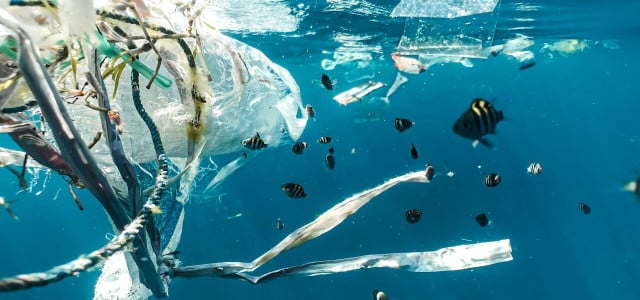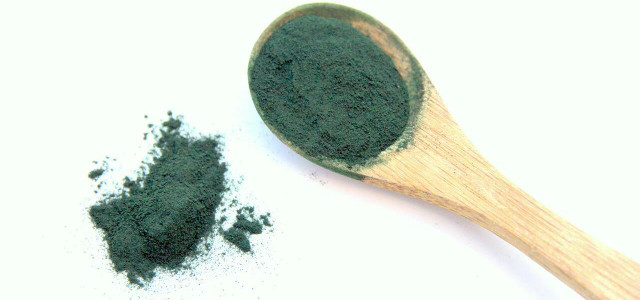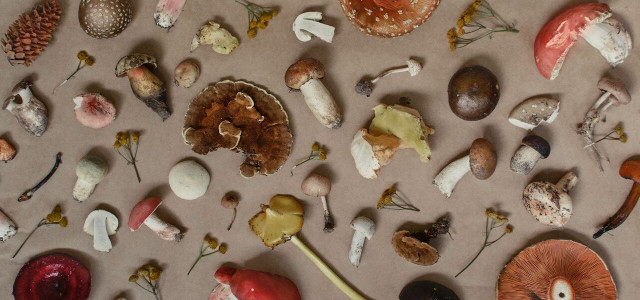The best superfoods for energy aren’t always kind to the planet. Here are six easy-to-find, sustainably sourced superfoods that pack a punch without damaging the environment.
It’s easy to assume that when we buy superfoods for energy and health, they don’t do any more damage than other foods. Most superfoods are generally considered to be naturally produced using traditional farming practices with minimal environmental impacts. However, the reality is that the rising demand for these superfoods can leave a hefty carbon footprint.
Our food system is now a global market and network. This means we can access a constant supply of healthy superfoods all year round. Seasons and distance no longer matter. Transporting food is one of the fastest-growing sources of carbon emissions and accounts for 11 percent coming from the food system.
The food industry has the following impacts on the environment, among many others:
- Accounts for over a quarter of global greenhouse gas emissions.
- Over half of the world’s habitable land is used for agriculture.
- 70 percent of global freshwater withdrawals are used for agriculture.
- Agriculture causes 78 percent of global waterway and ocean pollution.
- Livestock now outweighs wild mammals by a ratio of 15:1.
- Agriculture and aquaculture are listed as threats to 24,000 of the 28,000 endangered species on the planet.
What Are Superfoods for Energy?

The human body relies on the nutrients in food to function. These nutrients are required in varying amounts and interact with each other so that the body can convert food into energy. Carbs, fats and protein — macronutrients — provide the calories that fuel our energy levels.
For this to happen, we need ample micronutrients — vitamins and minerals — for the necessary chemical reactions to occur. A superfood for energy will therefore contain a healthy ratio of a range of essential nutrients and not just calories.
A superfood for energy will also contain fiber – which affects how we absorb other nutrients in the gut and supports microbiome diversity. How our gut bacteria, immune systems and other body systems are functioning will directly impact our energy levels. So, the sustainable superfoods on our list also contain compounds that support optimal health. That way, our physical, mental and emotional energy is used efficiently.
Superfoods That Don’t Make The Cut



Many naturally produced whole foods live up to superfood status. In view of the catastrophic impacts — like carbon emissions, deforestation and ocean acidification — that animal and seafood products have on our ecosystem, all of our superfoods for energy and sustainability come from plant sources. Some of our eco-friendly energy boosters might actually even help in our fight to save the planet!
You might be surprised to see that popular contenders — like avocado, almonds, quinoa and coconut have not made the list. The increased demand for these and other superfoods for energy has driven environmental impacts, like water and soil depletion, land conversion and transport emissions.
Avocados are now so popular that even drug cartels have become involved in their production in Mexico – where we import most of our avocados from. Goji berries are another nutrient-dense superfood for energy, but they are primarily cultivated in China and associated with heavy use of synthetic pesticides, fumigation and hazardous metal absorption.
Even good-old-reliables — like kale and blueberries — have been attracting negative pesticide-related attention. Tests by the U.S. Department of Agriculture (USDA) and Food and Drug Administration (FDA) showed that more than 92 percent of conventionally grown kale samples harbored up to as many as 18 pesticide residues. Domestic blueberries rank fairly high at number 14 on the Environmental Working Group’s (EWG) Guide to Pesticides in Produce but are trumped by kale, which raks at number 3.
1. Treat Yourself to Over 70 Plant Compounds With Aloe Vera



Give your metabolism a boost and try aloe vera as a superfood for energy. This fleshy plant contains over seventy active compounds — from antioxidants to vitamins and minerals — that have earned it an exceptional reputation. Unlike many plant-based foods, it contains all but one of the essential amino acids we require from our protein food sources and brings an array of proven health benefits.
Try aloe vera juice as an easy way to get this plant’s many benefits.
Plant hormones, known as auxins and gibberellins, and another compound called salicylic acid, have wound healing, anti-bacterial and anti-inflammatory effects. These benefits are even further enhanced because aloe also contains fatty acids that have anti-inflammatory and pain-relieving properties. Add in natural sugars, essential vitamins A, C, E and minerals, like calcium, magnesium, zinc and selenium, and we have ourselves a superfood. Aloe vera is even being studied in diabetes management.
The USA dominates the market of aloe vera, supplying 65 percent of global demand. Latin America is also a huge provider, so, there is no need to buy imported goods. In fact, this hardy succulent can be easily grown in a sunny garden or window sill. Learn how to propagate your aloe vera plant and grow it in every window of your house for a constant, fresh supply.
Aloe Vera is an eco-friendlier plant than many others for several reasons. It has been shown to not only absorb more carbon dioxide than other plants, but it also releases less. This plant naturally occurs in extremely dry and poor soils, so it thrives without fertilizers and needs minimal water to grow and spread.
2. Stay Heart-Healthy With the Right Pulse
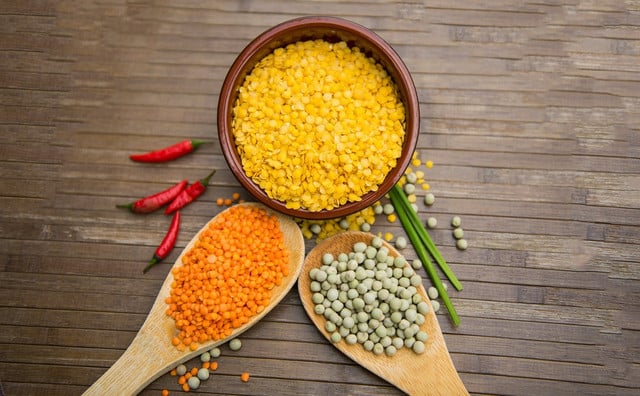


Pulses — such as beans, peas, and lentils — are grown and eaten in massive amounts all over the world. They meet “superfood for energy” status as they are oozing nutrition and laced with endless health benefits. This super-powered family is recommended by the American Heart Association and the American Diabetes Association. Pulses provide protein and fiber and are a significant source of micronutrients. They are associated with improved weight management, and possess phytochemicals linked to the following health benefits:
- antioxidant and anti-inflammatory properties
- anti-carcinogenic effects
- improved blood lipid profiles
- improved blood pressure and platelet activity
- low glycemic index
Pulses have a low carbon footprint and only use one-tenth of the water that other protein sources often require.
They are also ideal for crop rotation and enhanced land productivity. These favorites protect the pulse of the planet because they are nitrogen fixing plants. This means that by using soil bacteria to obtain nitrogen from the air, the need to add nitrogen to soil is negated. Nitrogen fertilizers are associated with contamination of water supplies, ozone damage and toxic fine particles in the atmosphere.
Learn more about edamame beans, a superfood powerhouse.
3. Superfoods for Energy: Sample a Sweet Super Potato
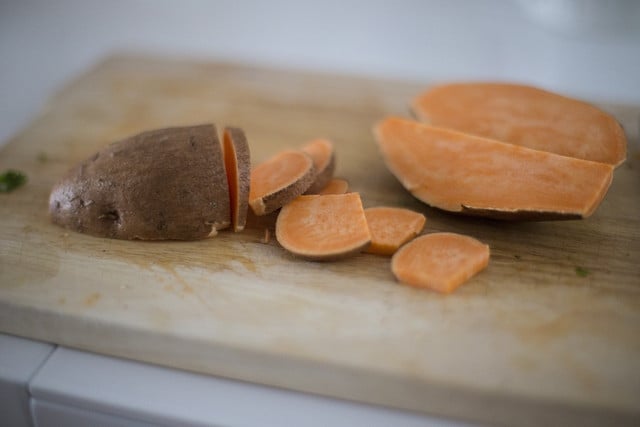


You are likely familiar with this orange, fleshy staple that has long been on the super list. This superfood for energy boasts vitamins A, C and B6, and a range of essential minerals. Its high fiber content boosts the sweet potato family further up the rank of nutrient-dense foods. They are even gluten-free and recommended for coeliac and gluten-sensitivity disorders.
The US is the biggest exporter of sweet potato in the world, so always opt for homegrown. You’ll find lots of sweet potatoes in warm areas like North Carolina, Mississippi, and Louisiana. Check out your local farmers market or buy from producers that are committed to sustainable farming practices.
This hardy orange gem does not require lots of fertilizer or irrigation. Sweet potatoes produce more biomass and nutrients per hectare than other crops and do not need frequent reseeding, which is kind to soil, biodiversity and the environment.
4. Weed Seeds Can Be a Superfood for Energy Too
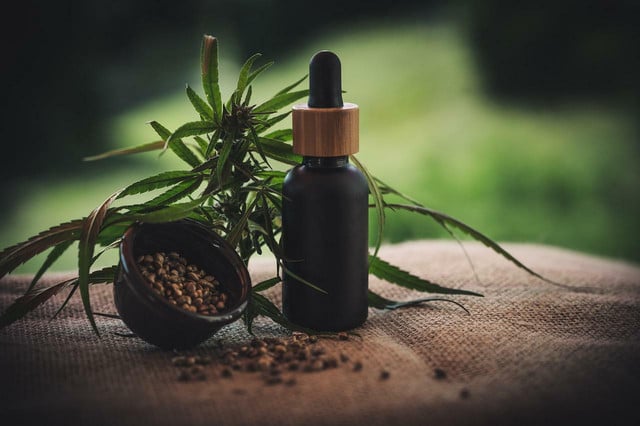


Hemp just might be our favorite sustainable superfood on the list. It was grown widely in America before anti-drug sentiment and law helped make it unpopular in the 1950s. Some still believe that hemp seeds have psychotropic properties because of their link with cannabis and drug culture. However, this superweed for energy does not have mind-altering effects and is bursting with energy instead.
Hemp seeds are an excellent source of omega-3 and omega-6 fatty acids, fiber and all nine essential amino acids. Like its cousin cannabis, hemp is a weed — meaning it is not a demanding plant. It can grow quickly in a variety of climates and soil types, improves soil health and needs little water to flourish.
Hemp has a massive range of medicinal and non-food uses too — including:
- Removal of toxic radiation from Chernobyl
- Sustainable natural fiber and fabric alternative
- Sustainable building material
- Other potential uses for a sustainable world including in paper, composites, biofuel, and food industry
Check out our guide on 6 benefits and uses of hemp hearts.
5. Superfoods for Energy: Go Green With Spirulina



Spirulina is a nutrient-dense, green algae. The major downside until recently was that a lot of spirulina has been imported from China, Japan and other parts of Asia Pacific and Europe. However, production in the US is rapidly growing, with North America estimated to surpass these producers in the global spirulina market, making home-produced spirulina easier to find. It is typically sold as a dark green powder and can also be sourced fresh.
Spirulina is linked to anti-cancer, anti-viral and anti-allergic effects. It can also help protect cells from damage. Studies are investigating this superfood for energy in the management of liver disorders, viruses, oral cancer, immunity and eye diseases. Given its rich nutritional make-up, scientists examining malnutrition have shown an interest in Spirulina.
Described as an ecologically sound, nutrient-rich superfood, this algae does not compete with crops for valuable dry land. It is considered a sustainable answer to global food supply and has even been successfully used by NASA to alleviate astronaut malnutrition during space missions! Unfortunately, cooking spirulina can destroy most of its nutrients, so use it wisely.
As with most foods, spirulina’s benefits are much more promising when the algae is consumed as food rather than as a supplement. Spirulina may become contaminated with toxic metals, harmful bacteria and other toxins if it is grown in unsafe conditions. Researching your source is advised, but despite the potential for heavy metal contamination, it is still considered a safe food.
6. Sprout Some Sustainably Sourced Superfoods for Energy at Home
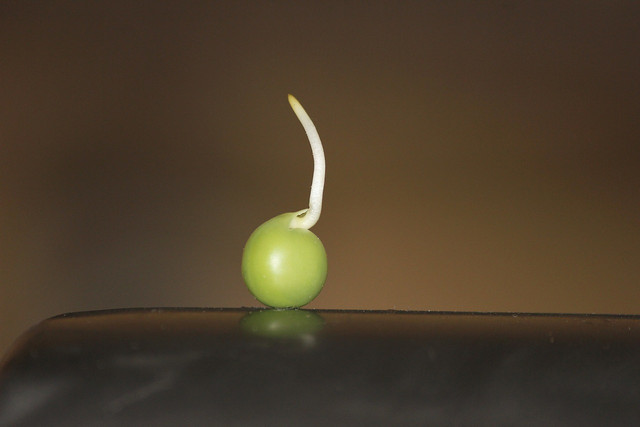


Many fresh foods begin to lose energy and nutritional density once they are harvested. Sprout germination activates enzymes and mechanisms that actually boost the nutrient content and our absorption of them. The plant is at the beginning of its life, so it is still growing and fresh.
Many sprout farmers practice sustainably in the US. One example is the food rescue program that has been established by The Sprout Farmers Market in Kansas. The initiative is dedicated to minimizing food waste and has been recognized by the US Environmental Protection Agency (EPA) for notable achievements in 2020 and 2021.
Try shopping at your own local farmer’s market or look for eco-friendly producers like these. Or, you could cut out waste, transportation and find uses for your empty jars by easily growing sprouts in a jar at home.
7. Buy Some Magic Tepary Beans
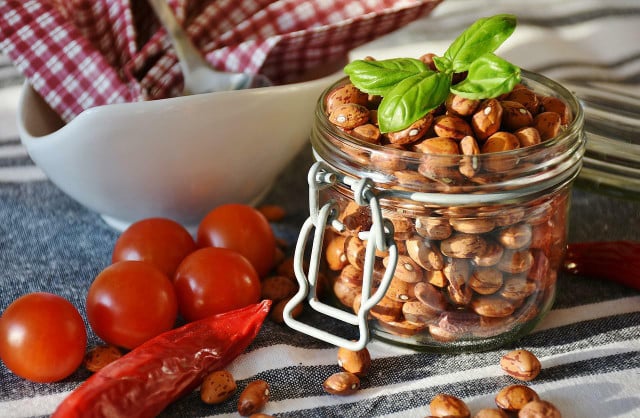


Teparies are packed with nutrition but are not well researched yet. They provide a high proportion of protein and many other essential nutrients including iron, niacin and calcium. We begin the tepary tale in a land that is not exactly far, far away.
In an area between the southwestern United States and Mexico, the tepary bean has been harvested by natives since American history began. This hardy crop is relatively unknown beyond its native lands, despite its wholesome and nutrient-rich composition. A steady decline in traditional food practices has seen a steady decline in harvesting of the bean — but it might be in our best interests to save it from extinction.
Climate change and warmer night-time temperatures are making it more difficult to grow popular beans in some areas. The tepary is being studied to identify the bean genes that support growth in hotter conditions. Researchers are even considering this magic bean as a solution to The Dry Corridor of Guatemala. Notorious for its high climatic variability and tolerance of long periods of drought — the tepary could reintroduce crops and biodiversity to this hostile region.
8. Superfoods for Energy: Ditch the Bread for Breadfruit
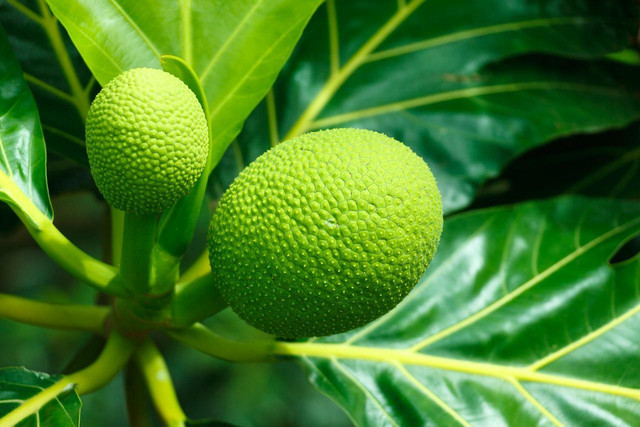


If you are lucky enough to live in a Tropical Zone, then breadfruit could be your new locally grown superfood for energy. The fruit is grown seasonally in South Florida in the US or imported — primarily from Jamaica.
The giant trees supply fruit in abundance and are considered a sustainable tool towards biocultural restoration in Hawaii. Research recognizes breadfruit’s nutritional density and supports the use of breadfruit as part of a healthy, nutritionally balanced diet. It’s very difficult to ship fresh breadfruit because it has a short shelf life and because of USDA plant quarantine restrictions.
The USDA does not allow fresh breadfruit to be shipped from Hawaii to the continental USA because of fruit flies in the state. Imported fruit must first be treated with irradiation and a fungicide dip, so only purchase fresh breadfruit if you know its source of origin.
9. A Dash of Dairy Without the Cow
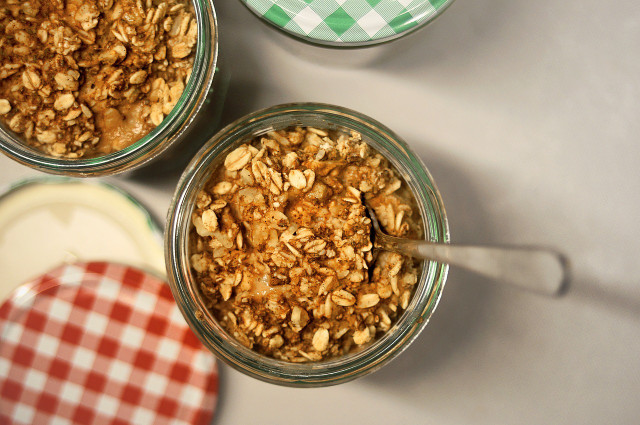


Have you figured out the best plant-based milk for you?
Oat milk is a great choice. Oats provide protein, carbohydrates, fiber, B vitamins and essential minerals like phosphorus and zinc. In addition, oats possess significant levels of antioxidants. Notably, soluble fiber from oatmeal has properties that may improve blood lipid levels, blood sugar and insulin levels. The US Food and Drug Administration (FDA) acknowledges that the consumption of three grams per day of this fiber from oats may reduce the risk of coronary heart disease.
You can find oat milk in most grocery stores these days, but you can easily learn how to make oat milk at home to have more control over the ingredients.
Oats are not only a power package of essential nutrients for energy. They also provide a sustainable answer to the environmental impact the dairy industry poses to the environment. Cow’s milk drains environmental energy — producing triple the emissions of any alternative plant-based milk. Each liter requires 1050 liters of water to produce.
Almond milk is heavily criticized for its water consumption, while soy has a substantial carbon footprint and is primarily used to feed livestock (check out our comparison of oat milk vs. soy milk for more details).
Oat milk has a relatively low ecological footprint and carbon dioxide emissions. Planting oats benefits the environment when included in a crop rotation. Widely grown in the US, these superfoods for energy do not need to be imported. They are considered sustainable despite their large water consumption. This is because growing them during the rainy season actually soaks up water to prevent soil erosion and depletion of soil nutrients.
10. Superfoods for Energy: Hail the Queen of the Sea
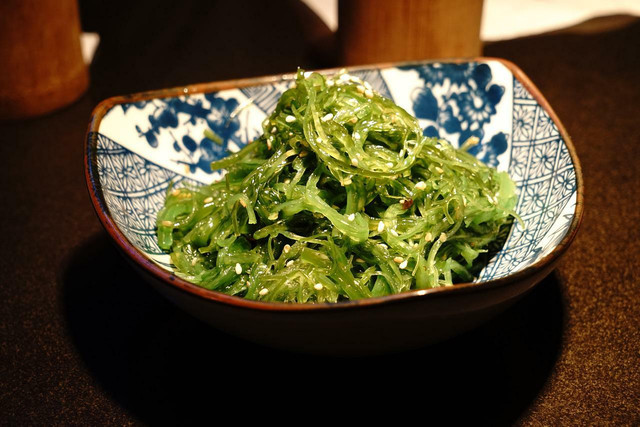


If any plant is worthy of the term sustainably sourced superfood, it seems to be ocean seaweed. Seaweeds are incredibly efficient at sucking up carbon dioxide, nitrogen and phosphorus. They use them to grow and release oxygen as a byproduct. This plant rapidly reduces ocean acidity and, best of all, does not compete with other crops for dry land.
Seaweed is one of several delicious sources of calcium for vegans. It may further help reduce greenhouse gas emissions from beef production too. By adding a small amount of Asparagopsis Taxiformis — a red algal species — to cattle feed, methane production from livestock might be reduced by up to 99 percent.
Seaweed and kelp are nutritious and versatile, but the majority in the US is imported and chemically treated. It’s actually one of the foods you’d never expect have artificial coloring! Seaweed import rates in the US are more than 94 percent, but many producers are establishing sustainable ways to harvest these superfoods for energy at home. So look out for homegrown organic and enjoy!
Nutritionally, seaweeds provides:
- A mineral content that is 10 times as great as that found in plants grown in soil.
- A wide range of trace elements and vitamins.
- A large volume of soluble and insoluble dietary fiber.
- A low calorie count.
Learn more: Seaweed Farming: Risks & Potential of the Miracle Crop
11. Experience the Magic of Mushrooms
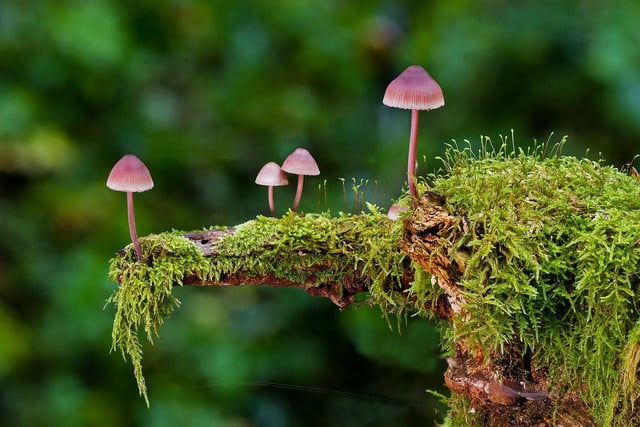


Mushrooms are extremely healthy and provide:
- Medicinal properties
- Protein, B-vitamins, fiber
- Immune-enhancing sugars called beta-glucans and other bioactive compounds
- Antioxidants such as selenium, vitamin D, glutathione
They also contain no cholesterol, no gluten, minimal fat, sugars, sodium or calories.
Many varieties of mushrooms exist, and we are only beginning to truly understand some of the almost magical properties these fungi have. Instead of creating waste, mushrooms can grow from biological wastes, agricultural wastes, agro-industrial wastes and industrial wastes.
You can also easily learn how to grow mushrooms on your own! Check out: Fun with Fungi: How to Grow Mushrooms Beginners Guide.
Even mushroom mycelium — the fungal network of fine white filaments that make up the root-like structure from which mushrooms grow — are receiving attention for their sustainability, versatility and nutrient content.
Researchers have begun to look for methods by which the twenty-seven million tons of plastic reaching landfill every year in the US can be reduced. This led to the discovery of plastic-eating mushrooms that could actually be used to clean up global pollution.
Read more:
- Can You Eat Mushroom Stems? Cooking Tips
- Avocado Benefits: How Healthy is this Problematic Superfood?
- Do Plants Have Feelings? All Sides of the Debate
Important Information regarding Health-related Topics.
** Links to retailers marked with ** or underlined orange are partially partner links: If you buy here, you actively support Utopia.org, because we will receive a small part of the sales proceeds. More info.Do you like this post?








